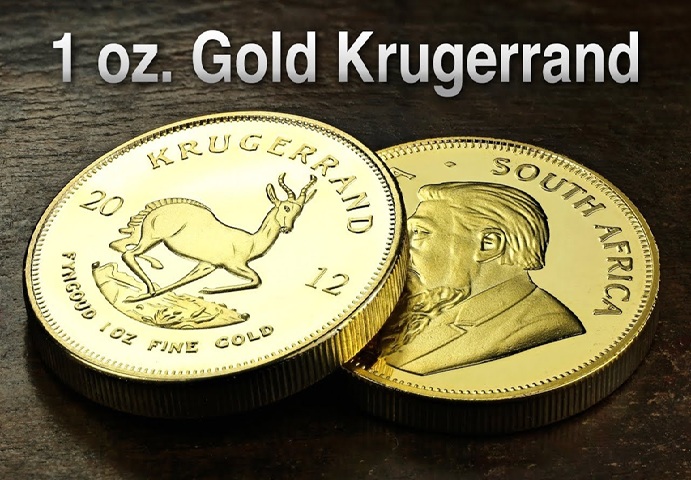When it comes to investing in physical gold, two options consistently stand out—Krugerrand coins and gold bars. Both represent real, tangible value and have a place in a well-balanced investment portfolio. But which one is better for you in 2025?
Choosing between Krugerrands and gold bars depends on your investment goals, flexibility needs, and how you plan to buy or sell in the future. Understanding the differences will help you make a confident and informed decision.
If you currently own Krugerrands and want to take advantage of high gold prices, this may be a good time to sell Krugerrand coins in the UK and maximise your returns.
What Are Krugerrand Coins?
Krugerrands are gold bullion coins first minted in South Africa in 1967. Each standard Krugerrand contains one troy ounce of pure gold, alloyed with copper for extra durability. This makes them slightly more rugged than coins like the Canadian Maple Leaf, which are 24-karat and softer.
Krugerrands are known around the world and are widely accepted by gold dealers. Their value is based almost entirely on the live gold price, with a small premium added for minting and demand.
They’re easy to store, easy to trade, and ideal for both beginners and experienced investors who want flexibility and liquidity.
What Are Gold Bars?
Gold bars, also known as bullion bars, are rectangular slabs of pure gold. They come in a variety of sizes, from 1 gram to 1 kilogram or more. Larger bars typically offer a lower premium over the spot price, making them a popular option for high-value investors looking to get the most gold for their money.
Gold bars are also easy to store, especially in bulk, and are ideal for long-term holdings. They’re commonly used by institutional buyers, central banks, and serious investors.
Comparing Liquidity
When it comes to selling gold, Krugerrands often have the edge. Because they are so well known and widely traded, it’s typically easier to find a buyer quickly. Coins are also more divisible—you can sell just one or two at a time rather than having to liquidate a large gold bar all at once.
Gold bars, especially those over 100 grams, may require more effort to sell, and there may be fewer buyers willing to take on such a large investment in one go.
For flexibility, Krugerrands offer more options. If you’re holding them and decide to sell, you can sell Krugerrand coins with ease and confidence.
Storage and Portability
Both Krugerrands and gold bars require secure storage, but coins have the advantage of being easier to handle and transport. They come in protective tubes or cases and can be stored in a small home safe or vault box.
Gold bars, while more compact in high values, can be heavier and may require more robust storage solutions, especially for larger sizes. If you ever need to move your gold, coins are simply more practical for transport and sale.
Pricing and Premiums
Gold bars usually carry a lower premium over the gold spot price, particularly in larger sizes. That means you’re paying less per gram of gold when buying a 1-kilo bar compared to several individual coins.
Krugerrands, on the other hand, often have a slightly higher premium due to their minting costs and strong retail demand. However, that premium can sometimes work in your favour when selling, especially during periods of high demand for fractional gold.
So while bars may be more cost-effective upfront, coins may offer better returns in the resale market.
Tax Considerations in the UK
In the UK, Krugerrands are not exempt from Capital Gains Tax (CGT), unlike some British-minted coins like the Britannia or Sovereign. However, the tax only applies to gains above the annual allowance, so for many individual investors, CGT is not a major issue.
Gold bars are treated similarly and are also subject to CGT on gains. If you’re a high-volume investor, it’s worth speaking with a tax advisor to understand how these rules affect your portfolio.
Ideal Investor Profiles
Krugerrands suit investors who want liquidity, recognisability, and manageable denominations. They’re perfect for those who may need to sell part of their holdings or trade frequently.
Gold bars are better suited to those with a long-term investment strategy who prefer to buy and hold. If you have significant capital and want the lowest cost per gram, larger bars might be your best bet.
Security and Authenticity
Both Krugerrands and gold bars are secure investments when purchased from reputable dealers. Bars often come with certificates of authenticity and serial numbers for tracking. Coins like Krugerrands have distinct markings, sizes, and features that make them easy to verify.
Modern gold dealers also offer professional testing services and secure packaging to reduce the risk of counterfeit products.
Which Is Better Overall?
There’s no one-size-fits-all answer. If you value flexibility, recognisability, and ease of sale, Krugerrands are the better choice. They offer solid value, are widely accepted, and are easy to manage for both small and large investors.
Gold bars are ideal if you’re focused on maximising your gold weight for the lowest price and don’t need the flexibility of smaller denominations.
Ultimately, many investors choose to hold both. Diversifying between Krugerrands and gold bars can give you the best of both worlds—cost efficiency and liquidity.
Final Thoughts
Krugerrands and gold bars each serve a clear purpose in the gold investment landscape. The right choice depends on how much you plan to invest, how liquid you need your assets to be, and your long-term goals.
